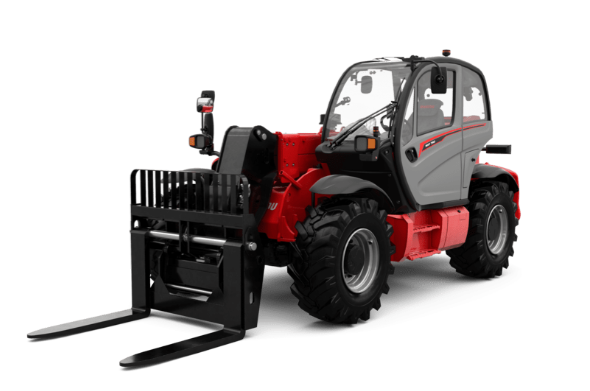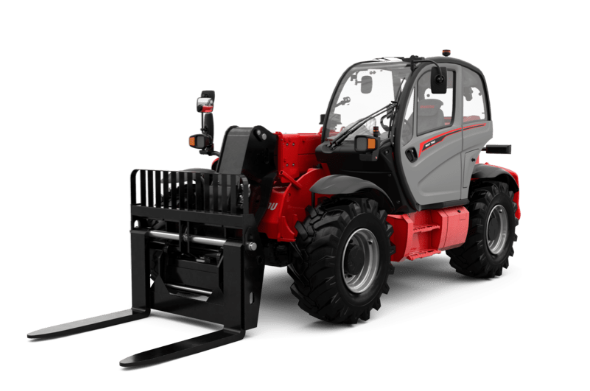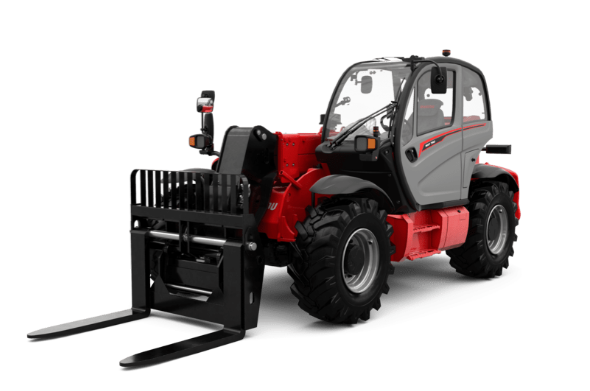Information
-
Conducted on
-
Prepared by
Part 1: General
-
A. Is training up to date for employees, and is the training documented?
-
Add media
-
B. Is there a safety committee, and do they meet at least monthly?
-
Add media
-
C. Is at least an annual safety audit of the facility being conducted, and is the audit documented?
-
Add media
-
D. Is the OSHA 300A posted from February 1 to April 30?
-
Add media
-
E. Are required safety & labor law postings properly displayed?
-
Add media
-
F. (California locations only) Is the required heat illness posting properly displayed?
-
Add media
Part 2: Housekeeping
-
A. Are work ares, passageways, storerooms, and service rooms kept clean, orderly, dry, and in a sanitary condition?
-
Add media
-
B. are permanent aisles and passageways appropriately marked?
-
Add media
-
C. Are work areas free from trip hazards?
-
Add media
-
D. Are wooden pallets stored flat on floor (not leaned on edge)?
-
Add media
-
E. Are locations for specific items/supplies clearly marked?
-
Add media
-
F. Are containers stored, stacked, and limited in height so they are stable and secure?
-
Add media
-
G. Are brooms/shovel handles in good condition (all aluminum handles capped)?
-
Add media
-
H. Are monthly rack inspections being performed, and is the inspection documented?
-
Add media
Part 3: Emergency Procedures
-
A. Does the facility have an Emergency Action Plan (EAP)?
-
Add media
-
B. are employees trained on the EAP and their role during an emergency?
-
Add media
-
C. Is the training current for the facility's First Responders, and are medical records being retained at the facility for the length of the First Responder's employment plus 30 years (including hepatitis B vaccination statues)?
-
Add media
-
D. Are emergency phone numbers posted in the facility (preferably by the phone)?
-
Add media
-
E. is the alarm system tested regularly?
-
Add media
-
F. Are drills performed at least on an annual basis?
-
Add media
-
G. Are building exits free from obstruction?
-
Add media
-
H. Is there an unobstructed path from each workstation (minimum aisle width: 28 inches)?
-
Add media
-
I. Are exits marked and adequately lighted?
-
Add media
-
J. Are exit doors unlocked from inside the building, and do they open in the direction of travel?
-
Add media
-
K. Is any door, passage, or stairway that could be mistaken for an exit or a way of exit access identified by a sign that reads "NOT AN EXIT" or similar wording?
-
Add media
-
L. Are emergency assembly areas clearly identified and communicated?
-
Add media
-
M. Is there an adequate amount of first aid kits in the facility, and is there a procedure in place for restocking them?
-
Add media
-
N. is there an adequate amount of blood borne pathogen kits in the facility, and is there a procedure in place for restocking them?
-
Add media
Part 4: Fall Protection
-
A. Are wall openings guarded which have a 4 feet or more drop (indoor & outdoor)?
-
Add media
-
B. is a standard toe board installed wherever there is a wall opening of 4 feet or more?
-
Add media
-
C. Are applicable employees trained on the proper use of fall protection equipment (lanyards, harnesses, etc.)? D
-
Add media
-
D. Is fall protection equipment (lanyards, harness, etc.) inspected prior to each use, and is the inspection documented?
-
Add media
-
E. Are ladders inspected prior to each use, and is the inspection documented?
-
Add media
-
F. Are ladders maintained in good condition?
-
Add media
Part 5: Job Safety Analysis
-
Have JSA's been written for all job tasks?
-
Add media
-
Are JSA's being used properly (new hire orientation, etc.)?
-
Add media
Part 6: Personal Protection Equipment (PPE
-
A. Are observed employees using the required PPE?
-
Add media
-
B. Is PPE readily accessible in the work areas that require it?
-
Add media
-
C. Has the "Respirators Used But Not Required" document been signed by each employee who uses a dust mask in the facility?
-
Add media
Part 7: Lockout/Tagout (LO/TO)
-
A. Does the facility have an adequate LO/TO program in place?
-
Add media
-
B. Are employees trained on their applicable role (authorized/affected/other) within the facility LO/TO program?
-
Add media
-
C. Are authorized employees provided with the necessary equipment to preform LO/TO?
-
Add media
-
D. Are facility LO/TO procedures being inspected on an annual basis, and is the inspection documented?
-
Add media
Part 8: Fire Protection
-
A. Are portable fire extinguishers provided, mounted, located, and identified so that they are readily accessible?
-
Add media
-
B. Are portable fire extinguishers mounted at the correct height?
-
Add media
-
C. Are portable fire extinguishers inspected on a monthly basis, and is the tag signed accordingly?
-
Add media
-
D. Are portable fire extinguishers subject to an annual maintenance check?
-
Add media
-
E. is the travel distance between portable fire extinguishers 50 feet or less?
-
Add media
-
F. Are all fire protection systems/equipment being properly inspected and tested, and are all inspections documented?
-
Add media
-
G. Are wood pallets stacked no taller than 6'?
-
Add media
-
H. Have wood and plastic storage been approved by the insurance carrier, and is the wood and plastic being stored to these guidelines?
-
Add media
-
I. Are flammable and combustible liquids stored properly in flammable liquid storage cabinets?
-
Add media
-
J. Are flammable and combustible material containers labeled, covered, and stored at least 35' away from ignition sources?
-
Add media
-
K. Are flammable and combustible liquids kept in closed containers when not in use?
-
Add media
-
L. Are compressed gas cylinders stored securely, away from heavy machinery and forklift traffic, and at least 35' away from ignition sources?
-
Add media
-
M. Are compressed gas cylinders properly labeled and capped when not in use?
-
Add media
Part 9: Powered Industrial Trucks
-
Are powered industrial trucks inspected before each shift, and is the inspection documented?
-
Add media
-
Are powered industrial truck warning labels and data plates in legible condition?
-
Add media
-
Do unattended industrial trucks have the load engaging means fully lowered, controls neutralized, and breaks set to prevent movement?
-
Add media
-
Are powered industrial trucks observed being used in a safe manner?
-
Add media
-
Are forklifts equipped with horn, overhead guard, front guard, seat belt, and data plate?
-
Add media
-
Are booms and other forklift attachments inspected prior to each use, and is the inspection documented?
-
Add media
-
If slings are used, are they inspected at least once per day and is the inspection documented?
-
Add media
-
Are dock plates used when loading/unloading operations are taking place between vehicles and docks, and are the docks in good ccondition?
-
Add media
-
Are wheel chocks utilized on trucks and trailers during loading/unloading operations?
-
Add media
-
Do scissor lifts have the owner's manual present on the lift?
-
Add media
-
Is there a designated area for battery charging/changing operations?
-
Add media
-
Does the battery charging area have a neutralizing agent readily accessible for spilled electrolyte and acid?
-
Add media
-
If powered industrial truck batteries are being removed from the vehicles during charging and/or maintenance is being done on the batteries, is there a plumbed emergency eye wash station/shower readily accessible (no more than 10 sec. away).
-
Add media
-
Is the emergency eye wash station/shower being inspected weekly, and is the inspection documented?
-
Add media
-
If LPG tanks are used, is there a designated location for the changing of tanks that provides adequate ventilation and has no sources of ignition within 35'?
-
Add media
Part 10: Equipment/Machines & Hand Tools
-
Does observed equipment/machines appear to be in safe operating condition, and is PPE readily accessible?
-
Add media
-
Are rotating or moving parts on equipment/machines guarded to prevent physical contact?
-
Add media
-
Are emergency stop buttons colored red?
-
Add media
-
Are grinders properly adjusted (work rest within 1/8" of the wheel, tongue guard within 1/4" of the wheel)?
-
Add media
-
Are grinding wheels subject to a ring test before being mounted, and is the test documented?
-
Add media
-
Do all electric overhead doors have a properly working protection system (e.g., constant pressure closing switch, safety edge, pressure relief mechanism, or 3-button control station)?
-
Add media
Part 11: Hot Work Operation
-
Are only trained employees allowed to perform hot work operations?
-
Add media
-
Is there a procedure in place to authorize when, where, and who is performing hot work operatios?
-
Add media
-
Is there a designated area for hot work operations, and is it screened off to protect employees in the line-of-sight?
-
Add media
-
Is a Hot Work Permit being used when hot operations are taking place outside of the designated area?
-
Add media
-
Are fire watchers being used when necessary?
-
Add media
Part 12: Hazard Communication
-
Has the hazardous chemical inventory been completed, audited on an annual basis, and is the audit documented?
-
Add media
-
Are all hazardous chemical containers properly labeled?
-
Add media
-
Is there a readily accessible SDS for all of the hazardous chemicals used in the facility?
-
Add media
-
If an SDS binder is used, is it audited on an annual basis and is the audit documented?
-
Add media
-
Are obsolete hazardous chemicals/SDS at the facility being documented, and is the documentation being retained for at least 30 years?
-
Add media
-
(Stores only) Is the required SDS posting properly displayed?
-
Add media
-
Are air sampling records being retained at the facility for at least 30 years?
-
Add media
Part 13: Hazardous Material
-
Are aerosols being properly stored in a caged-off area in the facility?
-
Add media
-
Are all liquid hazardous material boxes being stored at the correct orientation according to the orientation arrows at all times?
-
Add media
-
Is there a designated waste storage area being maintained in the facility and is waste being disposed of at least biannually?
-
Add media
-
Are hazardous waste manifest being retained at the facility for 3 years?
-
Add media
-
Is the annual waste activity report being completed per state law?
-
Add media
-
Is the weekly waste handling activity inspection being completed, an is the inspection documented?
-
Add media
Part 14: Electrical Safety
-
Is there adequate space provided and maintained around all electrical equipment (depth=36", width=30", or width of the equipment (whichever is greater), height=6.5')?
-
Add media
-
Are the tops of electrical boxes, service panels, and transformers free of materials?
-
Add media
-
Are unused openings in electrical enclosures and fittings enclosed with appropriate covers, plugs, and/or plates?
-
Add media
-
Are electrical box covers permanently marked "HIGH VOLTAGE" and "ARC FLASH", and is the marking visible and legible?
-
Add media
-
Is electrical equipment grounded?
-
Add media
-
Are extension cords being used for their designated purpose as temporary wiring and not as permanent wiring?
-
Add media
-
Are electrical cords spliced together with wire nuts, not tape?
-
Add media
-
Are there any exposed wires or cords with frayed or deteriorated insulation?
-
Add media
-
Is there tension relief on flexible electrical cords?
-
Add media
-
Is the Energized Electrical Work Permit being used whenever work is performed on energized electrical equipment?
-
Add media
Part 15: Occupational Noise Exposure
-
Is annual noise monitoring being conducted, documented, and kept on file for 2 years?
-
Add media
-
If the facility has a Hearing Conservation Program, are audiometric test being conducted, documented, and kept on file for the duration of the affected employee's employment?
-
Add media
-
If the facility has a Hearing Conservation Program, are employees properly trained?
-
Add media
-
If the facility has a Hearing Conservation Program, is PPE readily accessible to employees?
-
Add media
-
If the facility has a Hearing Conservation Program, is thee OSHA 29 CFR 1910.95 standard posted in the workplace?
-
Add media
-
If the facility has a Hearing Conservation Program, is the signage posted in areas where excessive noise levels exist?
-
Add media
Part 16: Contractor Safety
-
Is there an up date Contractor Policy Agreement, Certificate of Insurance, and Compliance for Contractors Checklist for all contractors performing work at the facility?
-
Add media



















